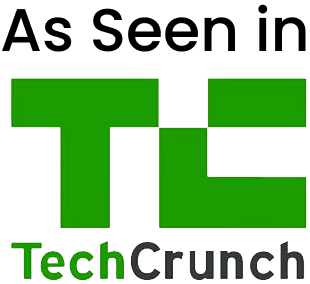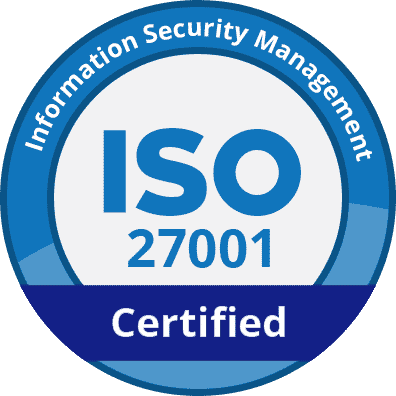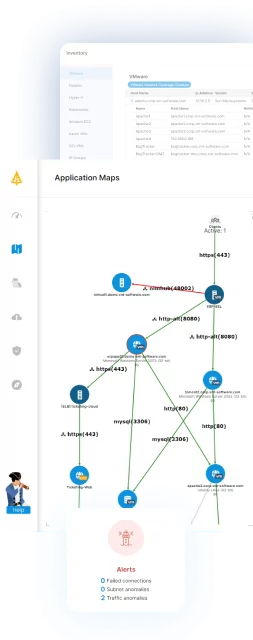What Is Cloud Infrastructure Security?
Cloud infrastructure security refers to the strategies, technologies, and best practices used to protect cloud-based systems, applications, and data. It ensures that cloud environments remain secure from unauthorized access, data breaches, and other cyber threats. This security encompasses multiple layers, including physical hardware, virtualization, networks, and software, requiring a separation of responsibilities between provider and user.
Key aspects of cloud infrastructure security include safeguarding access controls, encrypting sensitive data, and implementing robust monitoring and response systems. Cloud security strategies must be adapted to different types of cloud deployments —public, private, hybrid, and multi-cloud models—to address the risks and configurations of each environment.
Table of Contents
ToggleCloud Deployment Models and Their Security Implications
Public Cloud
In a public cloud model, resources are shared among multiple users over the internet. While cost-effective, it introduces security challenges due to its multi-tenant nature. Organizations setting up operations in the public cloud or migrating their data center must implement strong access controls, encryption, and continuous monitoring to secure data and applications.
The shared infrastructure means any vulnerability can potentially expose data across the tenant base, emphasizing the need for security measures. Public clouds often provide built-in security tools, allowing organizations to leverage these resources efficiently.
However, understanding the shared responsibility model is crucial, as security obligations are divided between the provider and users. Regularly updating and patching the systems and utilizing security features offered by the provider can significantly improve security.
Private Cloud
Private cloud solutions provide dedicated infrastructure for a single organization, offering control and security. These clouds are typically implemented in-house or hosted by a third party but are managed on private networks. This isolation provides a more secure environment, making private clouds suitable for organizations with stringent regulatory requirements.
Control over resources allows for tailored security measures, minimizing the risk of data exposure. Security in private clouds focuses on protecting against internal and external threats. Implementing access controls, regular security audits, and thorough monitoring are essential to maintaining secure environments. Though private clouds require significant investment in infrastructure and management, they offer the benefit of greater control over data.
Hybrid Cloud
Hybrid clouds combine private and public cloud resources, offering flexibility and scalability. This model enables organizations to leverage public cloud resources for non-sensitive operations while keeping critical workloads on private clouds. The hybrid approach introduces complex security challenges, as data and applications move between environments.
Integration and consistent security policies across both infrastructures are crucial to maintaining security. To manage these complexities, organizations should adopt centralized management and monitoring tools that span both public and private clouds. Applying encryption and secure access controls consistently across environments mitigates potential security risks.
Multi-Cloud
Multi-cloud strategies involve using services from multiple cloud providers, improving redundancy and flexibility. This approach also introduces challenges in managing security policies and tools across platforms. Organizations must ensure consistent security measures, such as encryption and access controls, across all services to protect data and resources.
Developing a centralized security management strategy is essential for effective multi-cloud operations. Integrating security tools that provide unified visibility and control across providers helps maintain a strong security posture. Coordination between different cloud services is crucial to avoid data silos and inconsistent security practices.
Related content: Read our guide to cloud network security
The Shared Responsibility Model in Cloud Security
The shared responsibility model in cloud security delineates the security obligations between cloud providers and users. Providers handle infrastructure security, while users manage data protection and access controls. Understanding this division is crucial for determining areas where users must implement their security measures.
For secure cloud deployment, organizations need clarity on their responsibilities and the tools available from providers. Organizations can improve security by leveraging provider tools while implementing internal policies. This collaborative approach is crucial for avoiding security gaps that could lead to data breaches or compliance issues.
The shared security model operates differently in different cloud deployment models. The following table summarizes the responsibilities of the cloud provider and cloud user in each model.
| Deployment Model | Provider Responsibilities | User Responsibilities |
| Public Cloud | – Infrastructure security (e.g., physical hardware, networking, hypervisor)- Availability and basic security tools- Compliance with standards and regulations | – Securing data, workloads, and applications- Managing access controls (e.g., Identity and Access Management)- Configuring security settings and enabling encryption tools |
| Private Cloud | – (If hosted by a third-party provider) Data center operations and hardware maintenance | – Full responsibility for all aspects, including infrastructure, data, workloads, access controls, and compliance- Implementation of tailored security measures like network segmentation and intrusion detection |
| Hybrid Cloud | – Security of public cloud infrastructure- Provision of APIs and tools for secure integration | – Management of data movement between environments- Ensuring consistent security policies and controls across public and private clouds- Monitoring and securing hybrid workflows |
| Multi-Cloud | – Security of each individual provider’s infrastructure- Availability of APIs and interoperability tools | – Orchestrating security policies across providers- Implementing consistent encryption, identity management, and monitoring across platforms- Avoiding misconfigurations and security gaps in integration efforts |

Lanir specializes in founding new tech companies for Enterprise Software: Assemble and nurture a great team, Early stage funding to growth late stage, One design partner to hundreds of enterprise customers, MVP to Enterprise grade product, Low level kernel engineering to AI/ML and BigData, One advisory board to a long list of shareholders and board members of the worlds largest VCs
Tips from the Expert
In my experience, here are tips that can help you strengthen cloud infrastructure security beyond standard practices:
- Enable immutable infrastructure principles: Configure the cloud infrastructure so that updates and patches require spinning up new instances rather than modifying existing ones. This reduces drift and ensures consistency with security baselines.
- Conduct regular configuration drift analysis: Monitor for deviations from approved configurations using drift detection tools. Correct any unauthorized changes promptly to maintain compliance and security standards.
- Segment workloads using virtual private clouds (VPCs): Isolate sensitive workloads within dedicated VPCs or subnets. Apply strict routing and firewall rules to minimize the risk of lateral movement during a breach.
- Deploy Just-In-Time (JIT) access policies: Implement JIT access for administrative accounts and resources. This approach grants temporary permissions, reducing the attack surface and limiting the impact of compromised credentials.
- Implement continuous compliance scanning: Use automated compliance scanners to verify adherence to frameworks like GDPR, HIPAA, or SOC 2. This ensures ongoing alignment with regulatory requirements and reduces manual oversight.
Common Cloud Infrastructure Security Risks
Here are some of the main risks associated with cloud infrastructure.
Misconfigurations
Misconfigurations in cloud environments occur when security settings are not properly adjusted to protect resources and data. For example, some cloud storage services allow file sharing through publicly accessible links. While convenient, these links expose files to anyone who discovers or guesses the URL, creating a significant risk of unauthorized access.
The complexity of cloud environments often exacerbates the risk of misconfigurations. Organizations frequently use multiple cloud providers, each with unique configuration options and security tools. Managing these diverse settings can be challenging, increasing the likelihood of leaving vulnerabilities exposed.
Shadow IT
Shadow IT refers to employees using unapproved cloud services or applications without the knowledge of IT or security teams. This is common due to the user-friendly nature of cloud platforms, where anyone can quickly set up services or applications.
The problem arises when sensitive data is stored or processed in these unapproved services. IT teams lose visibility and control over such data, creating vulnerabilities that can be exploited by attackers or accidentally exposed due to poor security in personal or unmanaged environments.
Vulnerable APIs
APIs are fundamental to cloud services, enabling interaction between applications and cloud resources. However, poorly secured APIs can become a significant attack vector. For instance, inadequate access controls or a lack of rate limiting can allow attackers to overwhelm APIs with spam requests, consuming resources or exposing sensitive data.
Another common risk is the accidental exposure of API keys and authentication tokens, such as through public code repositories. Attackers who obtain these keys can gain unauthorized access to cloud resources, further increasing the organization’s exposure to threats.
Malicious Insiders
Malicious insiders are individuals within an organization who intentionally misuse their access to cloud systems to harm the company. These actions could include data theft, system sabotage, or unauthorized exposure of sensitive information.
For example, a disgruntled former employee with active access credentials might delete critical data or deploy malicious software. Such risks highlight the importance of strict access management and timely deactivation of accounts for departing employees to limit insider threats.
Zero-Day Vulnerabilities
Cloud environments are built on layers of software, ranging from the hypervisor to customer-deployed applications. Zero-day vulnerabilities—flaws that are exploited before a patch is available—can affect any layer of this stack.
These vulnerabilities are especially dangerous in cloud settings because multiple tenants often share infrastructure. If a zero-day is exploited in the cloud provider’s platform, it could compromise the security of numerous customers simultaneously, leading to data breaches, denial of service, or unauthorized access to cloud environments.
5 Cloud Infrastructure Security Best Practices
By implementing these best practices, organizations can ensure they have the most secure infrastructure in the cloud.
1. Regularly Update and Patch Systems
Regular updates and patching are essential for securing cloud environments. They address vulnerabilities that attackers could exploit by ensuring systems are hardened against known threats. Organizations should implement automated patch management solutions to simplify and enforce timely updates, reducing the risk of security breaches due to outdated software.
2. Implement Multi-Factor Authentication (MFA)
MFA improves security by requiring multiple verification methods before granting access to cloud resources. MFA significantly reduces the risk of unauthorized access, as attackers would need more than just login credentials. Implementing MFA across all applications and services provides an additional security layer, protecting sensitive data and resources.
Regular evaluation of MFA effectiveness and adapting to emerging threats is crucial for maintaining protection. Using MFA as part of a broader identity and access management strategy ensures comprehensive security controls within cloud environments.
3. Encrypt Data at Rest and in Transit
Encryption is crucial for protecting data in cloud environments both at rest and in transit. It ensures that even if data is intercepted, it remains unreadable without the proper decryption keys. Employing encryption tools provided by cloud providers, alongside key management practices, strengthens data protection against unauthorized access.
Consistent use of encryption improves data confidentiality, serving as a barrier against breaches. Regularly reviewing encryption protocols and adapting them to new threats maintains data security.
4. Enforce Least Privilege Access Controls
The principle of least privilege ensures that users have minimal access to perform their tasks, reducing the scope of potential security breaches. Implementing role-based access control (RBAC) and regular audits of user permissions help maintain strict adherence to this principle, minimizing the risk of unauthorized access to critical resources.
Ongoing access reviews and automated provisioning tools simplify access management. By enforcing least privilege effectively, organizations can improve their cloud security posture.
5. Continuous Monitoring and Logging
Continuous monitoring and logging provide visibility into cloud environments, enabling prompt detection and response to security incidents. By maintaining active oversight of network traffic, access logs, and system performance, organizations can identify suspicious activities quickly. Integrating security information and event management (SIEM) systems further improves incident response capabilities.
Regular analysis of monitoring data helps reveal trends and potential security gaps. Leveraging these insights allows for proactive improvements in security strategies, ensuring defense against evolving threats in cloud infrastructure.
Securing Cloud Applications with Faddom
As cloud environments become increasingly complex, ensuring strong security across public, private, and hybrid clouds presents a significant challenge. Traditional security tools often lack the ability to provide real-time visibility into dependencies and risks throughout cloud infrastructure. This is where Faddom excels.
Faddom’s agentless, real-time application dependency mapping enables IT and security teams to:
- Gain Full Visibility: Instantly discover all assets, connections, and traffic flows across hybrid and multi-cloud environments; there are no blind spots.
Enhance Security Posture: Identify shadow IT, unexpected network connections, and unprotected data flows that could expose your infrastructure to cyber threats. - Simplify Compliance & Risk Management: Automate documentation, track changes, and ensure cloud security policies align with compliance frameworks like NIS2 and DORA.
- Detect Anomalies and vulnerabilities: Identify unauthorized changes, unexpected traffic, and potential misconfigurations before they become security incidents.
- Improve Cloud Migration & Segmentation: Reduce risk during cloud transitions by understanding which workloads belong together, helping teams implement microsegmentation effectively.
With Faddom, you gain real-time visibility into cloud security with no agents, no disruptions, and in under 60 minutes. Faddom ensures your cloud infrastructure remains secure, optimized, and compliant.
Want to see it in action? Chat with our expert team!









